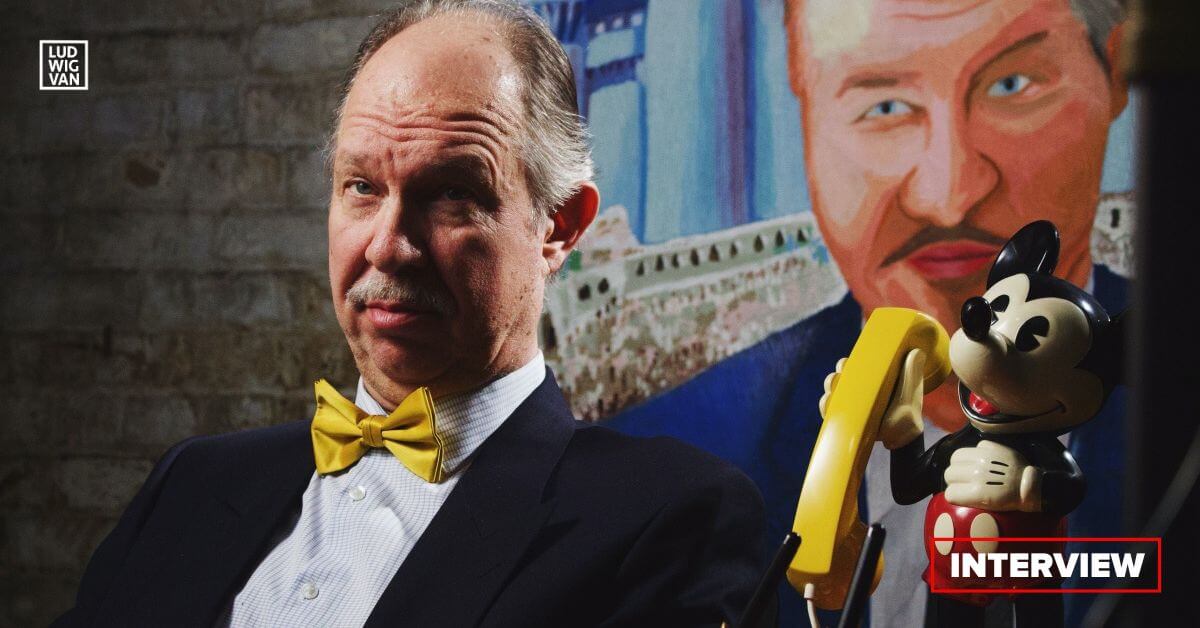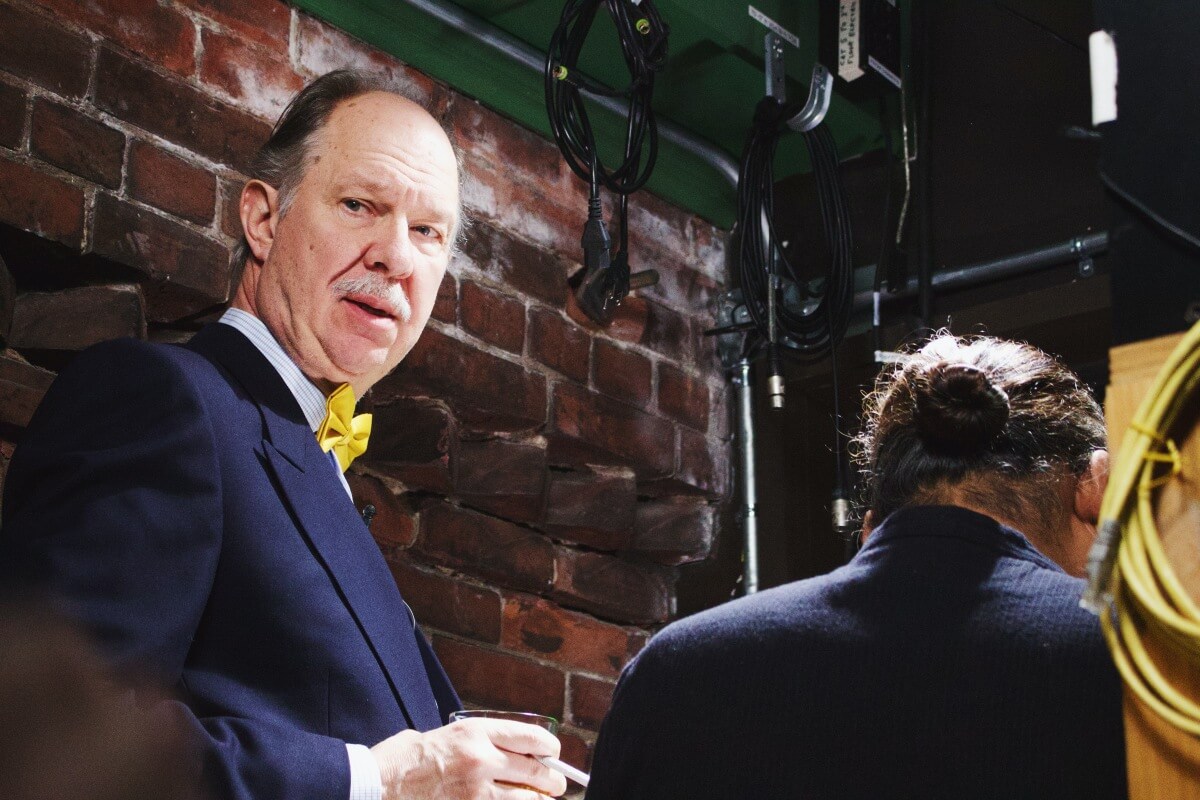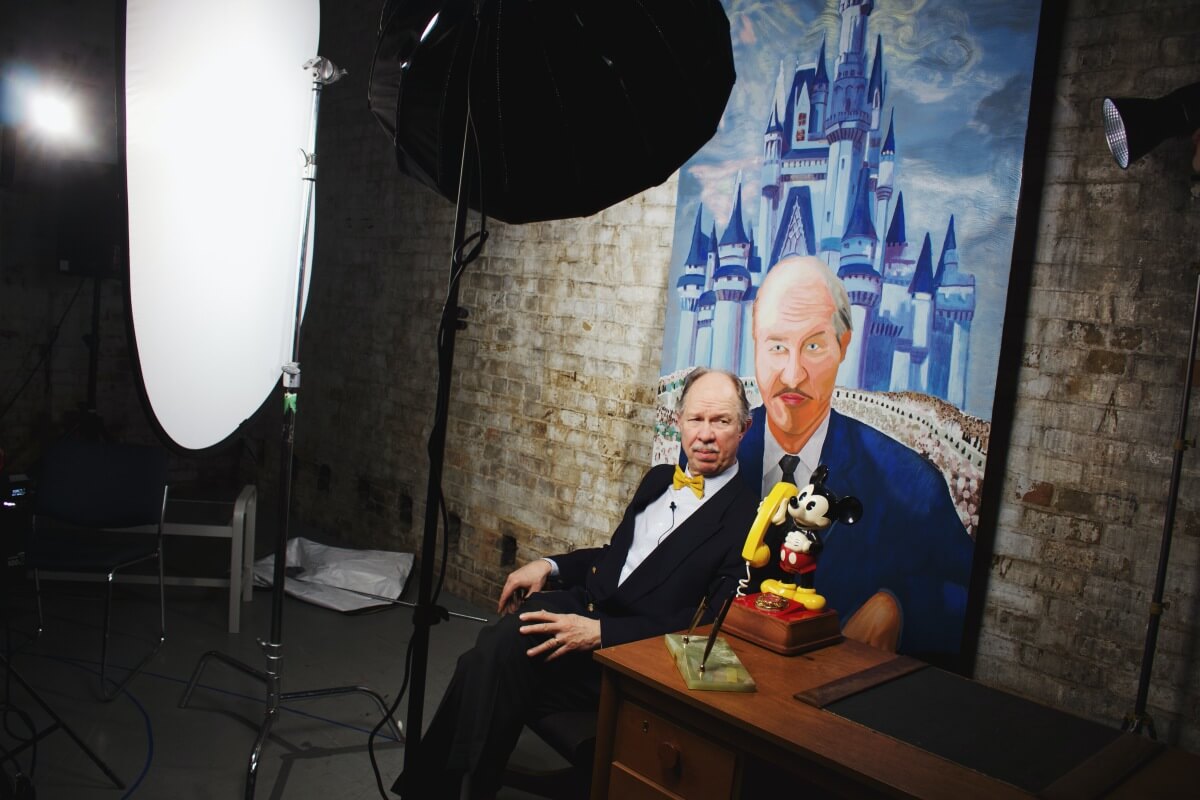
Lucas Hnath (pronounced Nayth) is one of the most audacious of the current crop of American playwrights.
Toronto has already seen two of his plays. His A Doll’s House, Part 2 (2017) featured Nora 15 years after slamming the door on Thorvald. Dana H (2019) is currently wowing audiences with its harrowing tale of his mother’s kidnapping by a psychopathic patient.
Now, we come to the third play, which is a co-production between Outside the March and Soulpepper Theatre, and which has its official opening on April 17 at the Young Centre. The ungainly title, A Public Reading of an Unproduced Screenplay About the Death of Walt Disney (2013), presents a dark version of the iconic kiddiemaester of legend and song.
Who else to play Walt Disney but Diego Matamoros? Not only is the Toronto-based actor one of the busiest in Canada, he is also one of the most admired. His acting career spans over 40 years of excellence, and covers theatre, television, film, radio and voice animation, not to mention he is also a sought after teacher and director.
I met the multi award-winning Matamoros, 65, on Zoom during a break from technical rehearsals. We discussed both his background (and there are surprises here), and, of course, Disney. And on a trivia note: when I asked the actor his age, he quipped that Disney died at 65 in 1966, the same age as he is now.

You were born in Rio de Janeiro, Brazil. How old were you when you immigrated, and was theatre an early interest?
I was 9 when we came here. I grew up in the Don Mills suburbs, and learned English in ESL classes when I was 10. From the age of 12, I was very interested in photography, and by the time I was 18, I was a freelance photographer shooting sports events. And then my mother said, you have to study something.
Is that when theatre kicked in?
At Forest Hill Collegiate, I took drama, and my teacher, Jane Carnwath, had told me that I could be an actor, so I auditioned for LAMDA. I went to London when I was 18, and finished theatre school when I was 20.
Why LAMDA?
In high school, I took a double English credit, and I came to love Shakespeare by listening to vinyl records, as well as Stoppard and Beckett. It had to be an English school where I did my training.
To be an actor, you need to see others doing a similar thing. With my student card, a ticket was one pound, and I saw 47 shows in the first three months I was in London. My horizon was blown open.
What was the start of your career?
In England, I was told that I hadn’t become an actor yet. When I came back to Toronto, I couldn’t find work, so I went into marketing. Everything was changing. It was the transition to digital.
I finally got a job in The Mousetrap for $135 a week in 1980. On my third try for Stratford in 1982, John Hirsch took me into the Young Company, and I was on the mainstage by 1984. My first role was Puck. That’s when my career really started.
Tell me about the founding of Soulpepper in 1998.
The company was founded by 12 actors who had trained and performed in Stratford’s Young Company under Robin Phillips. The late actress Patricia Hamilton had a dormant charity number from her own company that we took over.
Soulpepper was to be a master class theatre, where we’d rehearse intensely with a director, performing the classics. We also wanted to establish a training academy, as well as mentoring youth programs. Soulpepper has become one of Toronto’s most successful theatres, and has the country’s only full-time training program connected to a professional company.
And yet, you are the only one of the 12 still left with an on-going relationship with Soulpepper.
I’ve performed in over 70 shows, be they big parts or small, and I’ve never missed a season, except for the pandemic.
I want to point out, however, that I am at Soulpepper as a freelance artist and sometime consultant. I broke my contract when sexual harassment charges were made against artistic director Albert Schultz in 2017. I had to take a side.
After Albert resigned in 2018, I stayed with Soulpepper in order to help salvage the company. Alan Dilworth took over as temporary artistic director. He had been in the Stratford Young Company, and then the board hired Weyni Mengesha to be the permanent AD. She had been the first director in our training academy.

Let’s talk about Hnath’s play, A Public Reading of an Unproduced Screenplay About the Death of Walt Disney. I know that the scene is a board meeting. Disney has written the screenplay, which he performs, and that it is about himself, his death, and his dream to change the world.
It’s an exciting and intense piece — like a fever dream — and a very specific portrait of Disney. Hnath has taken this iconic character on a wild ride. It’s a look behind the scenes, where we watch Walt get derailed in a struggle with his brother Roy, his daughter, and his son-in-law.
Walt’s in his last year of life, and Hnath presents him as an autocratic workaholic and a patriarch, a chain smoker who is suffering from lung cancer. The play’s themes arise out of issues related to Walt, like mortality and humanity. He wants to do good, but it’s a foolish dream.
The play is a fictional account — more dramatic than historic — like Richard III. Disney fans beware.
What’s the background of how the production came about?
I’d been talking to director Mitchell Cushman of Outside the March Theatre for the last five years about doing something together. He brought me Hnath’s play, and I immediately saw that it was an extraordinarily difficult piece to tackle, but I wanted to do it. For the longest time, we had a cast, and we’d rehearse, but we had no performance venue. Luckily, Soulpepper had a play that was changed, so we could come in.
Cushman is one of our most innovative directors. What’s his approach?
The play is usually performed as a reading, but this is a Mitchell Cushman production, so it’s being done differently. His original vision is to make the Baillie Theatre smaller, from 350 seats to 115. There’s a red curtain down the middle of the theatre, and people are going to be disoriented about the way they enter. Also, Walt loved gadgets, and it’s really imaginative how Mitchell has incorporated this idea into the production.
You have been a theatre artist for over 40 years. Any wisdom you wish to impart?
There is no such thing as a generic audience. Different people are in the theatre each time, and each is an individual with their own experiences. It’s the job of the production to focus these disparate personalities, and make them into an audience. The job of the art is to create a cathartic experience.
Are you looking to promote an event? Have a news tip? Need to know the best events happening this weekend? Send us a note.
#LUDWIGVAN
Get the daily arts news straight to your inbox.



